new posts in all blogs
Viewing: Blog Posts Tagged with: critical thinking, Most Recent at Top [Help]
Results 1 - 11 of 11
How to use this Page
You are viewing the most recent posts tagged with the words: critical thinking in the JacketFlap blog reader. What is a tag? Think of a tag as a keyword or category label. Tags can both help you find posts on JacketFlap.com as well as provide an easy way for you to "remember" and classify posts for later recall. Try adding a tag yourself by clicking "Add a tag" below a post's header. Scroll down through the list of Recent Posts in the left column and click on a post title that sounds interesting. You can view all posts from a specific blog by clicking the Blog name in the right column, or you can click a 'More Posts from this Blog' link in any individual post.

By: Samantha McGinnis,
on 4/7/2016
Blog:
First Book
(
Login to Add to MyJacketFlap)
JacketFlap tags:
Collaboration,
Critical Thinking,
Balloons Over Broadway,
Using First Book,
Tips and Resources,
Home At Last,
Lon Po Po: A Red Riding Hood Story,
Partnership for 21st Century Learning,
Creativity,
Communication,
Add a tag

Creativity, critical thinking, communication and collaboration are critical skills for children to learn so they can succeed in today’s world.
Use the books below and the guided questions to teach these concepts found in each story.
You’ll find a well-known fable told from another culture’s perspective, an inspiring tale about a family working together and the true story of the Macy’s Thanksgiving Parade. To view all the books chosen and to see all the tips and activities suggested for each book, visit the Learn for Life section.
When sisters Shang, Tao and Paotze get a surprise visitor while their mother is away, they have to figure out if it’s really their Po Po (grandmother) who is at the door.
Lon Po Po is about critical thinking and how you can use lots of clues to figure out a problem. Use these questions and ideas to get your child thinking and talking about the story:
- What clues did the sisters have to figure out
- The sisters tricked the wolf. Do you think it was right or wrong to trick the wolf? Why or why not? Have you ever tricked someone? What happened?
Home At Last written by Susan Middleton Elya, illustrated by Felipe Davalos
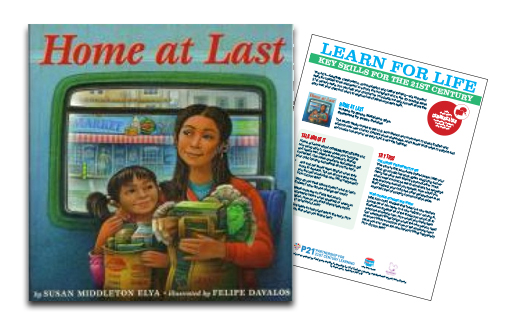
The Patiño family moves to the U.S. from Mexico and must learn to speak English and adapt to their new country. Despite some challenges, Ana’s family finds ways to support and encourage one another as they build a new life together.
Home at Last is about communicating and how being able to clearly share your thoughts and needs with others is important to feeling connected. Use these questions and ideas to get your child thinking and talking about the story.
- Ana and her family learn English when they move to America. Tell me about a time when you learned something new. What happened? How did you feel?
- Why do you think Mamá doesn’t want to learn English? How did she change her mind?
This real-life story shares the life of Tony Sarg, the talented puppet-maker who helped the Macy’s Thanksgiving Day Parade come to life.
Balloons Over Broadway is about using CREATIVITY to build on existing ideas to make something new and different. Use these questions and ideas to get your child thinking and talking about the story.
- What are some different ways Tony uses his creativity in the story?
- Tony is always looking at his balloons and making changes so that they work better. Why was it important that he kept improving the balloons? How do you think about making something better?
Developed as a joint project with the Partnership for 21st Century Learning and with generous support from Disney, each hand-picked book in the Learn for Life section is paired with a FREE downloadable tip sheet. These tipsheets designed to help you equip the kids you serve with the key 21st century skills they need to thrive in school and in life.
The post Books that Teach Creativity, Critical Thinking, Communication and Collaboration appeared first on First Book Blog.

By:
Sue Morris @ KidLitReviews,
on 3/19/2016
Blog:
Kid Lit Reviews
(
Login to Add to MyJacketFlap)
JacketFlap tags:
Children's Books,
creativity,
imagination,
Picture Books,
Eric Carle,
nonsense,
critical thinking,
surrealism,
Philomel Books,
Penguin Young Readers Group,
Library Donated Books,
Very Hungry Caterpillar Day,
5-Stars,
The Nonsense Show,
Add a tag
I found out the Toledo Imagination Station is on the finalist list for the 2016 National Medal for Library and Museum Service. One of the other finalists is The Eric Carle Museum of Picture Book Art (I would love to visit this museum). Today is Very Hungry Caterpillar Day. What could be more appropriate for this day than a book …
 In this guest post, author and media literacy expert Tina L. Peterson, Ph.D., demonstrates how media literacy skills can help readers think deeply about diversity in books.
In this guest post, author and media literacy expert Tina L. Peterson, Ph.D., demonstrates how media literacy skills can help readers think deeply about diversity in books.
When I was a kid, I rarely paid attention to the ethnicities of characters in my favorite books. I probably assumed that, because I related to them, they were like me – white, suburban, and middle class. Despite the fact that many of my classmates and close friends were Latino and Asian, it didn’t occur to me that the characters in most books I read didn’t represent the mix of people in my life.
It was only when I got hooked on The Baby-Sitters Club series that I began to notice book characters’ ethnicities. Author Ann M. Martin incorporated characters of color in a way that gave each person a voice, rather than making non-white characters part of the backdrop to a white protagonist’s experience. The character Jessi Ramsey felt like my first black friend.
As I grew up I began reading in a more critical way, and questioning the stories and characters I encountered. In college I learned that the skills I was developing had a name: media literacy. This type of literacy can encourage young people to think about the representations they see in books, and identify perspectives that are emphasized as well as those that may be missing. It can help young readers (and the adults who guide them) appreciate the value of diversity in children’s literature.
Media literacy is an approach to education that encourages active reading/viewing and critical evaluation of media messages of all types including books, TV shows, video games, movies, music, and social media. Three of the five key questions of media literacy can guide discussions of children’s books:
 Who created this message?
Who created this message?
All too often, an author is just a name on a cover, and readers don’t think about the people who write the stories they enjoy. Encouraging young people to learn about their favorite authors can help them understand whose perspectives they are seeing. How many are black, or Latino, or Asian? How many are men, and how many are women?
This discussion doesn’t have to lead to tokenism in a reading list, but rather to an awareness of who tells the stories they enjoy. It’s also useful for children to learn that they can relate to an author who might seem different from them.
What lifestyles, values and points of view are represented in, or omitted from, this message?
The answer to this question varies widely in books for children as well as adults. For example, the points of view represented in a Nancy Drew novel (white, female, affluent) are in stark contrast to those in one of Matt de la Peña’s books (Latino, male, working class).
Encouraging students to identify perspectives that are emphasized or missing from the books they read can help them expand their horizons and imagine other world-views. In addition, seeking out books that include points of view they don’t usually encounter can cultivate empathy.
How might different people understand this message differently from me?
As Hamlet suggests to Horatio, ‘there are more things in heaven and earth than are dreamt of in your philosophy.’ Young readers should be encouraged to share with their peers the meanings they make of books, and the knowledge that informs those meanings.
Many may be surprised that another’s interpretation differs from their own. A book that incorporates Spanish or Arabic words may be understood differently by a child who speaks one of those languages at home. A black child who has heard about racial discrimination or experienced it firsthand might read a story about Rosa Parks differently than a white child would.
Media literacy education encourages critical reading and consideration of diverse points of view. It’s a productive and useful approach given the increasingly global everyday culture of the 21st century, when young people may encounter difference in their peers more than any generation did before them. Media literacy and intentional diversity in children’s literature can ensure that difference is treated as an opportunity for learning.
 Tina L. Peterson, Ph.D. is the author of Oscar and the Amazing Gravity Repellent (Capstone) and serves on the leadership council of the National Association for Media Literacy Education. More information is available at tinalpeterson.com
Tina L. Peterson, Ph.D. is the author of Oscar and the Amazing Gravity Repellent (Capstone) and serves on the leadership council of the National Association for Media Literacy Education. More information is available at tinalpeterson.com
Martin Luther King, Jr.'s Why We Can't Wait includes "The Summer of Our Discontent" in which he wrote about moderates who, opposed to segregation, were friends of the Civil Rights Movement. But, King wrote, these moderates were less enthused about the breadth of the movement's call for equality to jobs, housing, education, and social mobility, which he called a Revolution.
Rather than condemn them, he sought to understand their reluctance. He wrote:*
They [the moderates] are evidence that the Revolution is now ripping into roots. For too long the depth of racism in American life as been underestimated. The surgery to extract it is necessarily complex and detailed. As a beginning it is important to X-ray our history and reveal the full extent of the disease. The strands of prejudice towards Negroes are tightly wound around the American character. The prejudice has been nourished by the doctrine of race inferiority. Yet to focus upon the Negro alone as the "inferior race" of American myth is to miss the broader dimensions of the evil.
Here's the next paragraph. There is a lot to say about the ideas in this paragraph, but my point in sharing it is the last line, which I am emphasizing with bold italics:
Our nation was born in genocide when it embraced the doctrine that the original American, the Indian, was an inferior race. Even before there were large numbers of Negroes on our shores, the scar of racial hatred had already disfigured colonial society. From the sixteenth century forward, blood flowed in battles over racial supremacy. We are perhaps the only nation which tried as a matter of national policy to wipe out its indigenous population. Moreover, we elevated that tragic experience into a noble crusade. Indeed, even today we have not permitted ourselves to reject or to feel remorse for this shameful episode. Our literature, our films, our drama, our folklore all exalt it.
I'm sharing King's words today--the day after the US celebrates Martin Luther King Day--because I would like people to think about what he said in those two paragraphs. I want you to think about it each day as you work with children or teens and the books you use with them.
How many of the books on your shelf exalt the experiences of Native peoples in ways that incorrectly cast us as inferior people? Is it hard for you to look critically at those books because they require you to examine a previously unexamined allegiance to a view of American character that has not looked critically at what King called its evil dimensions?
__________
*I am reading
Why We Can't Wait as an ebook and cannot provide page numbers for the excerpts above.
Why We Can't Wait was first published by Beacon Press in 1963.

By: KatherineS,
on 4/13/2014
Blog:
OUPblog
(
Login to Add to MyJacketFlap)
JacketFlap tags:
*Featured,
Science & Medicine,
Health & Medicine,
Psychology & Neuroscience,
clinician,
monoamine,
oxidase,
based”,
clinical,
clinical,
inhibitor,
Books,
psychiatry,
critical thinking,
clinicians,
Add a tag
By Lloyd A. Wells
It is easy to delineate what clinical decision-making is not. It is not evidence-based medicine; it is not critical thinking; it is not eminence-based medicine; it is not one of many other of its many attributes; and it stands alone, with many contributions from all these fields. It is far more difficult to characterize what clinical reasoning is and very difficult to define.
But the clinicians among us deal with it every day and, I think, recognize it when we do it and observe it.
Evidence-based medicine is a mantra. But it is a difficult mantra. No one wants to say, “I reject evidence: I am a quack.” But it is complex and difficult. Evidence from the research in psychiatry comes from clinical trials, neural imaging, genetics, and other fields. Clinical trials can be read and understood. They are viewed as the sine qua non of evidence-based medicine. But the trials are conducted on patients without any other clinical conditions and are usually of very brief duration. The clinician, on the other hand, is often dealing with patients with many other syndromes and a great deal of chronicity. It is hard to make a claim, based on evidence, that the excellent clinical trial of Drug X applies to such a patient.
Neural imaging is far more difficult. It is a very complex methodology, and psychiatric studies which use it include as investigators physicists, neuroradiologists, psychiatrists, psychologists, and others. The work is so interdisciplinary that, usually, none of the authors understands the entire paper. This is a huge question, I believe, for philosophy of science. Most of these studies are conducted on a small N, with very complex statistics, and few have been replicated. What is the clinician to do with them? Many clinicians make the assumption that the spectroscopic findings somehow translate to clinical “facts”, but that is generally not a safe assumption, nor one on which to base treatment decisions as yet.
Similarly, genetics studies are also very difficult, especially because of the completely central statistical analyses which are necessary to understanding the papers — and which few clinicians have time to read or sufficient training to understand.
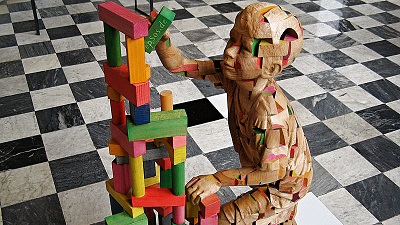
Many clinicians try hard to be “evidence-based”, but it is very difficult for anyone to truly sort through the evidence in order to make an on-the-spot clinical decision which will affect the health of a patient. Some journals and digests attempt to do this in order to assist clinicians, but reliance on them implies a trust in their employees which may or may not be justified.
For all these reasons, “eminence-based” reasoning has some attraction. The clinician should base his decisions on recommendations of experts rather than her or his own scrutiny of the literature. But many of the experts are quite old and have been removed from day-to-day clinical interactions for many years.
A couple of years ago I encountered a young patient with a severe, atypical depression. My immediate response was, “This patient reminds me of another patient, who had a superb response to a monoamine oxidase inhibitor, so perhaps I should try one.” This is a poor rationale for a clinical decision until it is parsed, but, in fact, the young man’s depression was categorically similar to that of the other patient, neither had responded to more traditional treatment, and there was a supportive literature for the use of a monoamine oxidase inhibitor in this type of clinical situation. The patient in fact responded well to this treatment. I believe that this type of clinical decision-making is common and that it is based on science and evidence, though sometimes the science and evidence are not immediately apparent unless the clinician thinks about it.

Clinical reasoning requires consideration of the evidence and efforts to assess it, good critical thinking, and also, in my view, the experience of interacting with and treating many patients over time. It is not a laboratory exercise but one which involves a doctor, a patient, and the world around them.
Lloyd A. Wells, Ph.D., M.D., is Consultant Emeritus at the Mayo Clinic in Rochester, Minnesota, USA. While there, he chaired the Division of Child and Adolescent Psychiatry for nineteen years and was the Department of Psychiatry’s Education Chair for twelve years. He is co-editor, with Christian Perring, of Diagnostic Dilemmas in Child and Adolescent Psychiatry.
Subscribe to the OUPblog via email or RSS.
Subscribe to only brain sciences articles on the OUPblog via email or RSS.
Image credits: (1) Wooden Sculpture of Science Genetics, by epSos.de, CC-BY-2.0 via Wikimedia Commons. (2) Sorrowing Old Man, by Vincent van Gogh, public domain via Wikimedia Commons.
The post What is clinical reasoning? appeared first on OUPblog.


By:
Jaclyn DeForge,
on 9/24/2012
Blog:
The Open Book
(
Login to Add to MyJacketFlap)
JacketFlap tags:
education,
Resources,
Reading Aloud,
critical thinking,
reading comprehension,
Mary Cowhey,
Musings & Ponderings,
common core standards,
Curriculum Corner,
Black Ants and Buddhists,
tolerance,
Add a tag
 Jaclyn DeForge, our Resident Literacy Expert, began her career teaching first and second grade in the South Bronx, and went on to become a literacy coach and earn her Masters of Science in Teaching. In her column she offers teaching and literacy tips for educators.
Jaclyn DeForge, our Resident Literacy Expert, began her career teaching first and second grade in the South Bronx, and went on to become a literacy coach and earn her Masters of Science in Teaching. In her column she offers teaching and literacy tips for educators.
I live in Astoria, Queens, one of the most racially, culturally and ethnically diverse neighborhoods in New York, and my apartment building absolutely reflects that diversity. My neighbors are from Egypt, Bangladesh, and the Dominican Republic and the building is warm and lively, full of immigrant families with young children.
Last week, New York City public schools were closed for Rosh Hashanah, and on Monday, my neighbors’ children played in our building’s courtyard late into the night. My windows were open, and as I sat reading I caught snippets of their conversations as they laughed and ran and screamed and played. But when I stopped and I listened closely, it occurred to me that I kept hearing the same word over and over: the “n-word.”
It was just falling out of their mouths, every other word, as if it were just a synonym for “friend” or “dude.” This saddened me for a couple reasons: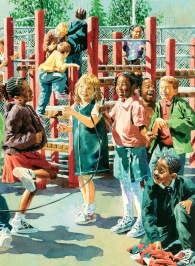
1) For most of the children in my building, English is a second language. I can think of thousands of other words that they should be absorbing and using instead.
2) I also got the sense that the children - being so young and many being first generation Americans, and none of them black - didn’t understand the social and historical implications of the word. They may have known it was a “bad word,” but I would bet they didn’t understand why.
These were not hateful children. These were uninformed children. These were children parroting back a word they’d heard others use without understanding its power. These were children who needed to be taught about the weight of their words.
This got me thinking about the Common Core Standards. Seems like a bizarre leap, but it’s not, really; I’m a huge literacy nerd, and most of my thoughts can be traced back to curriculum.
On page 7 of the introduction, the authors of the Common Core discuss the intentions of the standards, and express that one of the traits of college-/career-ready students is that they come to understand other perspectives and cultures:
Students appreciate that the twenty-first-century classroom and workplace are settings in which people from often widely divergent cultures and who represent diverse experiences and perspectives must learn and work together. Students actively seek to understand other perspectives and cultures through reading and listening, and they are able to communicate effectively with people of varied backgrounds. They evaluate other points of view critically and constructively. Through reading great classic and contemporary works of literature representative of a variety of periods, cultures, and worldviews, students can vicariously inhabit worlds and have experiences much different than their own.
This is huge! In essence, it empowers educators to teach the big things, like tolerance, acceptance, and equality alongside math and science. In addition to teaching comprehension strategies, teachers more than ever can choose books to share with their students that take on some pretty powerful topics and use the literacy block to discuss, debate, respond, investigate and explain.
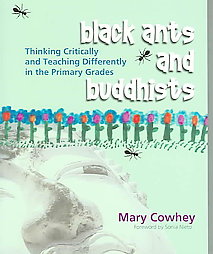 One of my favorite books on curriculum development and educational philosophy around teaching for social justice is Mary Cowhey’s Black Ants and Buddhists: Thinking Critically and Teaching Differently in the Primary Grades. Ms. Cowhey’s strength is her ability to navigate the delicate and difficult social issues and historical topics with young children, weaving it into the fabric of her literacy and social studies curriculum.
One of my favorite books on curriculum development and educational philosophy around teaching for social justice is Mary Cowhey’s Black Ants and Buddhists: Thinking Critically and Teaching Differently in the Primary Grades. Ms. Cowhey’s strength is her ability to navigate the delicate and difficult social issues and historical topics with young children, weaving it into the fabric of her literacy and social studies curriculum.
During one Read Aloud a week, Ms. Cowhey chooses a book that will provoke a philosophical discussion and uses the time to focus on listening and language standards, and peppered throughout the book are the titles of the texts she chooses (not surprisingly, some of the books she mentions are ours!). She includes a powerful chapter entitled “Nurturing History Detectives,” where she talks about how to get children to think critically about perspective when learning history, students that comprehend but can also critique. The Common Core Standards address this need, too:
“Students are engaged and open-minded—but discerning—readers and listeners. They work diligently to understand precisely what an author or speaker is saying, but they also question an author’s or speaker’s assumptions and premises and assess the veracity of claims and the soundness of reasoning.” (also page 7 of the Introduction)
If the idea of teaching tolerance excites you, and I hope it does, I urge you to check out her book. I think it will be an important resource as we make the shift to more rigorous, content/comprehension/critical thinking driven Common Core aligned curriculum.
Filed under:
Curriculum Corner,
Musings & Ponderings,
Resources Tagged:
Black Ants and Buddhists,
common core standards,
critical thinking,
education,
Mary Cowhey,
Reading Aloud,
reading comprehension,
tolerance 


As a card-carrying member of the National Council of Teachers of English (NCTE), I have the privilege of receiving teaching materials and research journals published by the organization. I also receive a weekly e-mail newsletter and daily updates to online member discussion boards. (Teachers, these are great resources, and they make membership well worth it!).
I am not trying to sell NCTE membership here, although that may be the way it sounds. I tell you this only to reference an interesting discussion thread I have been following. The thread began when a college-prep English teacher asked where she could find sample persuasive essays. What ensued was an intense debate over whether teaching persuasive writing is appropriate for students preparing to enter college.
The gist of the thread, by the time three weeks of discussion were over, was that students in college may learn to write expository and persuasive essays in their freshman composition classes, but most of the college-level instructors who weighed in said that this was doing students a disservice. They wrote that college students are rarely asked to write persuasive or expository essays in classes in disciplines other than English. Instead, it seems that the argument-support essay would best prepare students for writing in all subject areas. I thought about this, mostly on my long commute in and out of Manhattan, and I think I agree. Here’s why.
I teach online writing courses to college freshmen, and the two primary courses I’ve taught focus on the expository and persuasive essay. By the time we’ve made it halfway through either course, however, I’m focusing on getting students to state an argument in their thesis statements, and then to support that idea throughout their essays. Sounds like argument-support writing, doesn’t it?
The key here is to realize that when students write expository essays, they support their primary idea (what they’re explaining) with details and examples, and when they write persuasive essays, they support their opinions with facts and statistics. Either way, there’s an idea that must be supported. It seems to me, then, that the best approach to teaching both these types of writing is simply to instruct students to support their main ideas.
0 Comments on Writing for College and Life as of 1/1/1900
What I hate about soccer are the low scoring games that often result in no "action" (as satirized by this classic Simpson's clip). The one thing I do like about soccer is that a World Cup really does involve the "world," unlike certain (ahem) other sports. Imagine, however, a soccer team that drills all day long but never actually competes. Such a team would be like the North Korean soccer team who allowed 12 goals in a mere three games in the World Cup. (To put things in perspective, the winning team, Spain, scored a total of 8 points for all 7 games of the World Cup. Ouch.) At the other extreme, imagine a team that plays against other teams all the time but never actually practices as a team. That sounds a lot like England at the World Cup.But what does all this have to do with Direct Instruction? Math is all about problem solving, and by "problem solving," I mean solving problems that require critical thinking. Of course, to solve problems, you need practice, practice, practice, and mastery of underlying content. A student who always drills (practices on straightforward problems) but never actually uses her critical thinking skills is like the team that always practices but never competes. At the other extreme, a student that always tries "challenging" problems but never actually drills is like the team that always competes but never practices. Neither is a successful learning strategy. A good teacher needs to find the right balance between the two for his classroom. It is apparent, however, that blindly applying either Direct Instruction or its archnemesis—a discovery-orientated approach—can lead to both extremes. So, let's examine what works with Direct Instruction. My favorite Direct Instruction strategy is the careful examination of pre-skills. For a gi
Teach strategies that are “generalizable,” i.e., that apply to a broad range of problems.
I’m not so sure about this one. Designing Effective Mathematics Instruction gives as an example that using a single pizza pie, cookie, or a pie chart (emphasis single) to teach fractions is a bad idea because any single model doesn’t apply to mixed fractions. Instead, the book recommends that you teach proper and improper fractions at the same time.
As I said above, I’m not so sure about this one. The underlying assumption is that students can master both types of fractions at the same time. But shouldn’t you teach pre-skills first? (Isn’t proper fractions a type of pre-concept necessary for understanding improper fractions?) I have the feeling that, in practice, if you try to teach both, you’ll end up focusing on proper fractions first.
I would agree wholeheartedly with this tip if we learned like computers. But we don’t. We humans like to attach meaning to what we do. We work best when we understand underlying concepts. So yes, teach generalizable, efficient strategies but keep Tip #1 in mind. Depending on your class, you may have to teach a less efficient, less generalizable strategy first so that your students have the opportunity to learn underlying concepts.
But what do you think? Leave your comments below.
As with other fun holidays, people feel that birthdays should be celebrated. Friends and coworkers take you out to lunch, or at least give you cards (that hopefully don’t insult you, poke fun at your age, or both). Families reminisce about the good ol’ days. Well, those days might’ve been good for them, but usually not me. It’s amazing how bad some of my past birthdays turned out to be.
In one large, glossy photo, I had just turned one. Trapped in a ruffled dress, I looked like a miserable doll. My mom and aunts all mugged for the camera, but the birthday girl would not smile. In the foreground, was a huge cake with pink roses I bet they wouldn’t let me eat because I was too young. Who wants to be one?
Other birthdays stick out in my head—like my seventeenth, when my mother made me cry in an

Earlier today we introduced you to Critical Thinking for Helping Professionals: A Skills-Based Workshop, 3rd edition, which is designed to engage readers as active participants in honing their critical thinking skills, mastering a coherent decision-making process, and integrating the evidence-based practice process into their work with clients. In the excerpt below the authors, Eileen Gambrill and Leonard Gibbs, list some questions that critical thinking and evidence-based practice can help answer.
Types of Questions That May Occur in Your Work with Clients
1. Effectiveness questions concern how effective an intervention might be for a particular client (e.g., “What feedin method(s) will work best for infants born with a cleft lip/palate?” “What method, if any, will most effectively forestall the onset of Alzheimer’s disease among nursing home residents like those here at Lakeside?” “Which method is most effective in helping interdisciplinary teams to work effectively?”)
2. Risk/prognosis questions concern the likelihood that a particular person will engage in a particular behavior or experience a certain event in a given period. For example, “What is the likelihood that a sex offender like Joe will commit a new offense within the two years of his parole?” “If I place sexually abused siblings in the same adoptive home, how likely is it that they will continue to abuse each other?”
3. Description questions may concern base rate and other descriptive data about clients (estimate of the frequency of a problem in a given population based on a sample of individuals from that population) or what has been found regarding similar clients. Examples are “What are the most common reasons for readmission to a hospital for aged persons who had been discharged to community support services?” “What is the base rate of teenage pregnancy in this city?” “What environmental and personal characteristics are associated with delinquent behavior of teenage boys?”
4. Assessment questions concern descriptions of client’s probles, alternative competing behaviors, and thier contexts. For example, “What is the most accurate assessment tool to determine pain in the neonate (newborn infant less than six weeks of age)?” “Is there a reliable, valid measure of depression or substance abuse, or parenting skills that will valuable to my client?” “What is the quickest, easiest to administer, least obtrusive, and most accurate assessment tool to see whether a client here at Sacred Heart Hospital has an alchohol abuse problem?” “What is the best instrument to screen for depression among the elderly at Syveresn Lutheran Home?”
5. Prevention questions concern the most effective way to prevent the initial occurrence of a problem or undesirable event, for example, “What is the most effective way to prevent SIDS (sudden infant death syndrome)?” “What is the most effective way to prevent skin breakdown in the diaper area of newborns having watery stools?” “What is the most effective way to prevent teenage pregnancy among students at South Middle School?” “Which is the most effective way to teach kindergarteners and first graders not to wander off with someone not authorized to take the child from school?”…


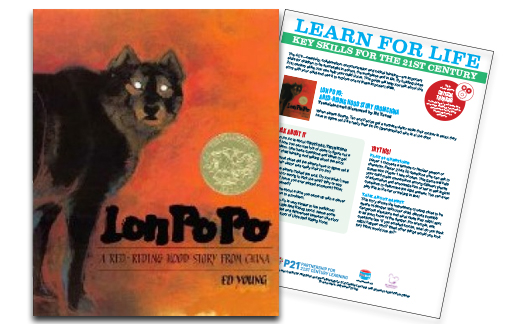

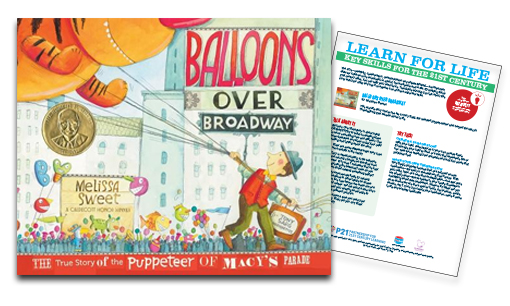



 Who created this message?
Who created this message? Tina L. Peterson, Ph.D. is the author of Oscar and the Amazing Gravity Repellent (Capstone) and serves on the leadership council of the
Tina L. Peterson, Ph.D. is the author of Oscar and the Amazing Gravity Repellent (Capstone) and serves on the leadership council of the 








Jaclyn, I love that your brain made the leap from the “n-word” to the Common Core. My brain does the same kind of thing all the time. I think the CC offers lots of opportunities for educators, authors, and illustrators to creatively address required content.
I’ve been engaged in an interesting conversation in the NFforKids Yahoo group about the Common Core and School visits. I think authors and illustrators have a unique opportunity to tailor their programs to meet standards (and potentially increase requests for visits by doing so) without losing the fun aspects of school visits. It will take work, though.